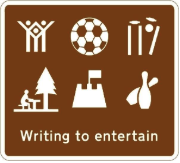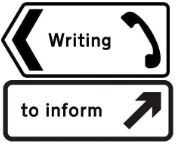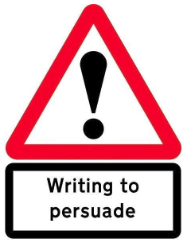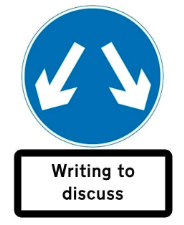Writing (including Grammar and Punctuation)
Our Approach to Writing
The Reading to Writing Journey
High quality texts are the launch pad for the children's writing activities. The texts are explored as a class with the teacher so often the reading complexity of the text will be above the independent reading level of the class. These high quality texts include picture books throughout the school as a stimulus for writing and we share other related model texts at or above the children's independent reading level to help them construct their own texts.
The structure of our reading to writing journey is:
Hook in!
- Every writing journey should start with a ‘hook’. (image, music, item)
- Using a book, video, visitor, trip, etc hook children into the unit of work.
- Pupils might use VIPERS skills to explore the stimulus.
Collect it!
The purpose of the ‘Collect It ‘stage is for children to be equipped with the best possible language to apply in their writing. We want to engage the children in writing through the provision of a range of engaging writing stimuli.
- Stimulus – book, video, etc.
- Provide rich experiences to develop ideas and vocabulary to use in writing. This could be in the form of a trip, a visitor, a film, book or a creative experience.
- All children should have access to high quality visuals/objects as well as dictionaries and thesauruses. Use photo images.
Deconstruct it!
Before the pupils begin to plan their writing, they should have opportunities to explore age related texts to better understand layout and features etc.
Use of exemplar texts (WAGOLLs) are crucial to the teaching of writing. The level of language should be pitched so it is slightly ahead of what the highest achievers can currently write and is, therefore, challenging but within reach. The receptive language of EAL children (as well as many with SEND) is often far ahead of their written skills. Therefore, we should not put ceilings on language acquisition by simplifying WAGOLLS. Instead, we should use scaffolding as a means of access to the rich language of the WAGOLL.
Plan it!
Once the pupils have been immersed with the language and knowledge of the topic and structures of the text type, they will then plan their own piece of writing. By the end of the ‘Plan it’ stage, children should have organised their ideas gained from the writing process so far into a cohesive and structured plan ready for writing. This does not have to be a boxed-up plan but must show that the pupil understands the structure, flow and language of their planned piece of writing. This plan should be kept in a ‘planning pocket’ and not stuck in (at this stage) to encourage the children to use their plan for writing.
Construct it!
This section of the learning process is to focus on the teaching of new knowledge needed to write their final piece. This will include precision teaching, modelling, relating to the purpose and function of the text as well as focused grammar activities. For example: Year 4 pupils are writing a narrative where they need to use fronted adverbials. In this stage fronted adverbials would be taught. The children then may produce some writing or ideas using this skill that they could use in their final piece. Or they may write a different text type to practise the newly taught skill.
Write it!
At this stage the pupils should be ready to write. They will have their plan, WAGOLL, language ideas as well as newly taught skills to help them write. This isn’t always a free write. This can still be structured with revision all the way through. This process may take up to three days depending on the year group and cohort.
Edit it!
Once the pupils have written their first draft, editing should firstly be taught and practiced before them editing their own work. This could be self-editing or peer editing.
Celebrate it!
The final piece of work will be celebrated through celebratory comments in books, stickers, shared on Dojo, shared with audience/peers.
Assessment
Each half term, children should write an independent piece of work. The work will not be structured for the children at all. It is an opportunity to see what the children can do completely independently. This will be linked to the half term’s purpose/text type or a previously taught text type.
The Four Purposes
When teaching writing, we focus on four purposes for writing:
Reception to Year 6
- To entertain - achieved by texts such as descriptions, stories and poems
To inform - achieved by texts such as labels, captions, non-chronological reports, instructions and recounts
Years 3 to 6
- To persuade - achieved by texts such as letters, adverts, brochures or posters
Years 5 and 6
- To discuss - achieved by texts such as balanced arguments
These four purposes of writing - to entertain, inform, persuade, and discuss - are often referred to as the four core purposes. Most texts can fit into one of these four categories.
Some texts might even have more than one purpose. Some persuasive texts, such as a particularly engaging speech, could also be entertaining, and children might learn new information from a story book. In this case, the text might be described as having a primary and secondary purpose.
Writers will also show the purpose of their writing through their language choices. This includes things such as level of formality, genre conventions, and use of either first, second, or third person.
There are also lots of language devices that are specific to a certain purpose. Persuasive texts, for example, might include rhetorical questions, statistics, and repetition. On the other hand, entertaining texts might use features such as direct speech, similes and metaphors, and atmospheric language. Writers will use these conventions and common features to let their audience know their purpose.
| Purpose | Text Types | Aim |
|
Reception to Year 6
|
Stories Character description Setting descriptions Poetry |
Aim is to interest and engage the reader. The use of description is particularly important when trying to paint a picture in the head of the reader. The main aim of any piece of entertaining writing is keeping the reader entertained and wanting to read on |
|
Reception to Year 6
|
Labels Captions Instructions Non-Chronological Reports Recounts: diary entries Recounts: newspaper reports |
Aim is to pass on information to the reader. The use of key facts and figures help to inform the reader. Pupils have to think carefully about how they present information to their readers. |
|
Years 3 to 6
|
Poster / brochure Adverts Letters |
The main aim of any piece of persuasive writing is to get the reader to share the writer's opinion or viewpoint. The children have to carefully consider their readers. |
|
Years 5 to 6
|
Balanced arguments |
The main aim is to provide the reader with points which clearly define the opinions that are being discussed |
Progression in features, grammar and punctuation within each text type
Writing to Entertain - Narrative and Poetry
The forms of poetry have been chosen to develop the children's effective use of language which will also support their work in narrative writing. Some have been chosen (e.g. Question and Answer) to reinforce previous learning in grammar and punctuation.
Writing to Inform
- Instructional Texts
- Non-Chronological Reports
- Recounts: Diary Entries
- Recounts: Newspaper Reports
Writing to Persuade - Posters, Brochures and Adverts
Writing to Discuss - Balanced Argument
| Grammar | Punctuation | |
| Years 5 and 6 |
Modal verbs - to indicate degrees of possibility Adverbials - to support cohesion Relative clauses - to add detail Conjunctions - to make links between arguments |
Commas for clauses Commas in lists Commas for fronted adverbials Colons and semi-colons to separate clauses Commas, brackets and dashes for parenthesis |








